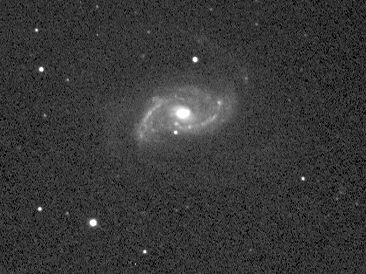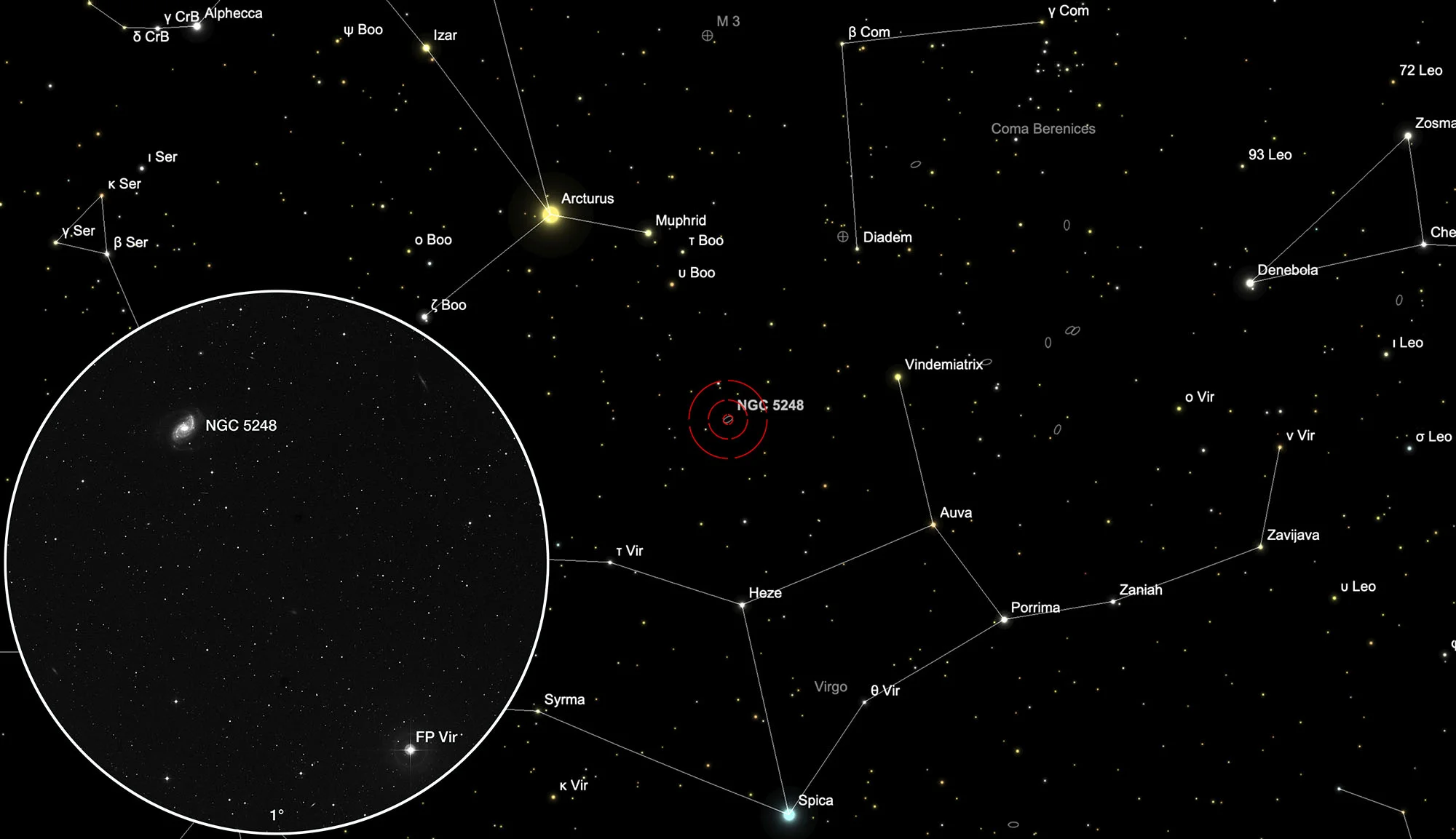Galaxy NGC 5248

History
The galaxy was discovered by William Herschel on 15 April 1784. He cataloged it as I 34. He described it as «very bright, considerably large, extended north preceding south following, small bright nucleus.» [464] Herschels son John cataloged it as h 1650 in his Slough catalogue from 1833. [466]. William Parsons, the 3rd Earl of Rosse, used John Herschels catalogue to observe the objects with his giant «Leviathan of Parsonstown» reflecting telescope with six feet mirror diameter. He observed the galaxy in 1855 and recognized its spiral structure. [486] Later the galaxy was included by Danish-Irish astronomer Johann Louis Emil Dreyer as NGC 5248 in his «New General Catalogue of Nebulae and Clusters of Stars», released in 1888. [313]

Physical Properties
According to NED, the galaxy is of the de Vaucouleurs morphological type, an extension of the Hubble classification: SAB(rs)bc. SAB = intermediate form from a spiral galaxy to a barred spiral, (rs) = transition to ring structure, bc = degree of opening of the spiral arms. Our own Milky Way is of the same type. [194]
On Simbad one finds distance measurements from 10.8 to 20.8 Mpc (35.2 to 67.8 million light years) and heliocentric velocities from 1109 km/s to 1189 km/s. [145]
| Designation | NGC 5248 |
| Type | Gx (SBbc) |
| Right Ascension (J2000.0) | 13h 37m 32.0s |
| Declination (J2000.0) | +08° 53' 10" |
| Diameter | 6.2 × 4.5 arcmin |
| Photographic (blue) magnitude | 11.0 mag |
| Visual magnitude | 10.3 mag |
| Surface brightness | 13.8 mag·arcmin-2 |
| Position Angle | 122° |
| Redshift (z) | 0.003839 |
| Distance derived from z | 16.22 Mpc |
| Metric Distance | 19.200 Mpc |
| Dreyer Description | B, L, E 150°, psbMrN |
| Identification, Remarks | WH I 34; h 1650; GC 3615; UGC 8616; MCG 2-35-15; CGCG 73-54; IRAS 13350+0908 |
Finder Chart
The galaxy NGC 5248 is located in the IAU region of the constellation Bootes between the figures of the constellations Bootes and Virgo, about halfway between the two stars υ Boötis and Heze (ζ Virginis). The 7 mag bright variable FP Virginis shows you the way here. The best viewing time is December to September.
Visual Observation
400 mm Aperture: In the 21 mm Ethos eyepiece (85x) the galaxy appears as an oval diffuse spot with a bright core. In the 9 mm Nagler eyepiece (200x) the two spiral arms are visible with averted vision. Now and then the small star next to the centre flashes. — 400 mm f/4.5 Taurus Dobsonian, Glaubenberg, SQM 21.27, a bit windy, Sahara dust and hazy, 21. 5. 2022, 23:15, Bernd Nies
